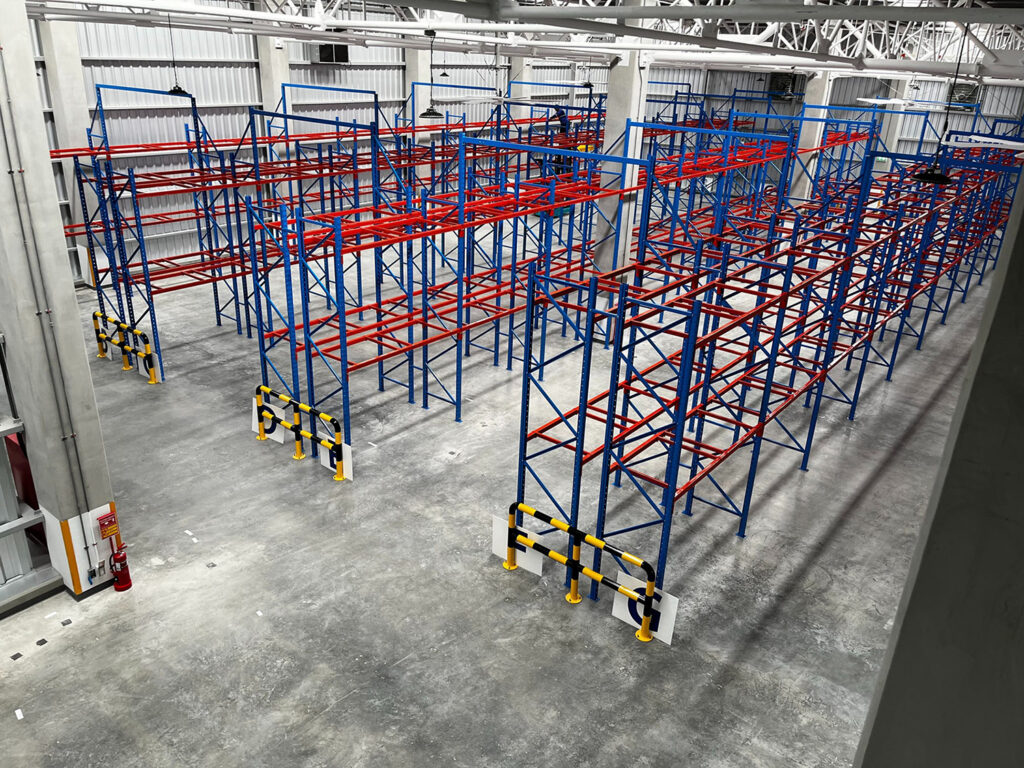Pallet racking’s vertical storage capacity, heavy-duty strength, and space-saving features make it useful in warehouses and other industrial environments. Pallet racking and safety inspections must be installed correctly and safely. We’ll discuss the benefits of fastening pallet racks to the floor and the best ways to do it.
Securing your pallet racking to the floor
Tall, vertical pallet racks carry huge, bulky cargo. Unsecured, they can cause injury or death. Unsecured racks can damage warehouse stock.
Metal anchors as well as concrete slabs secure pallet racking. Here are some tips for installing and securing racking:
- Consider aisle space when designing your warehouse plan. Because your racking is attached to the floor, it will be tough to change afterwards.
- Consider mechanical handling equipment space and safety elements like guard rails.
- After determining the type of pallet racking, a floor layout must be established for proper aisle spacing. Designed-for-narrow-aisles pallet racking is provided for tighter storage spaces.
- After the facility racking floor plan is created and the racks are installed, the decision to buy anchors must be made.
Before putting any anchors, it is essential to check that every rack is level. Every rack column must be secured to a solid concrete floor. Making use of an anchor is a matter of following the manufacturer’s advice and/or personal taste.
Stainless Steel Wedge Anchor
Concrete wedge anchors can secure pallet racks. Wedge anchors come in many different diameters and lengths, and they are made to be used in solid concrete. The diameter required for each application is determined by the size of the hole in the upright’s base plate.
Strike Anchor
When securing warehouse pallet racks, concrete striking anchors can also be employed. The strike anchor is an example of an impact-expansion kind of anchor that was designed specifically for use in solid concrete.
Wedge Anchor or Strike Anchor Size
Furthermore, it is crucial to figure out how much weight the chosen anchor needs to hold. Once the holding values have been calculated and confirmed, look at the technical specifications for the wedge anchor or the technical chart for the strike anchor to figure out what size anchor is needed. If you need an anchor but aren’t sure what size to get, it’s best to consult your city’s construction codes or an engineer. Manufacturers of pallet racks may specify anchor sizes.
Concrete wedge anchor installation:
Drill holes precisely using the hole in the base plate as a guide and a hammer drill fitted with a carbide-tipped masonry bit. It is important that the drill bit and wedge anchor have the same diameter.
- Compressed air, a shop-vac, or a wire brush can remove debris.
- Before entering the wedge anchor, install the washer as well as thread the nut.
- Unthreading the nut preserves the wedge anchor’s threads.
- Insert wedge anchors through pallet rack legs.
- Install each anchor to the specified depth.
- Torque wrench all nuts to the necessary value.

Keep in mind these things when installing a concrete wedge anchor:
- Whenever the concrete is in good shape and the required edge spacing and lengths are met, wedge anchors are highly efficient.
- The hole size is crucial to the wedge anchor’s holding values.
- ANSI standard carbide bits match anchor diameter.
- Carbide bits according to ANSI standards have diameter tolerances that work well with wedge anchors.
- The amount of torque that must be applied to wedge anchors varies.
Should pallet racks be secured to the floor with bolts?
The answer to this question is yes; storage racks must always be bolted down in locations wherever mechanical handling equipment runs or in locations when there are other factors which may overturn storage racks. Here’s what and how:
The floor plate and the bolts for the pallet racking should be set on top of a sturdy, robust base that offers sufficient support as well as anchorage for the components.
Every foot plate in a single row of racking needs to have the appropriate floor fixings attached to it.
Is it possible to mount pallet racks to the wall?
It is required that a pallet rack be self-supporting. Avoid mounting racks to the structures of buildings unless the building in question was specifically constructed for this use and the modification was given the go-ahead by an engineer. If there is absolutely no way around it, you will need to ensure that the pressures that are transferred to the structure do not exceed the capacity and that all of the criteria of the Building Code are adhered to.




